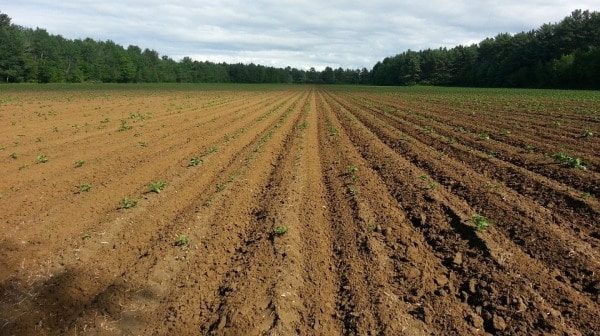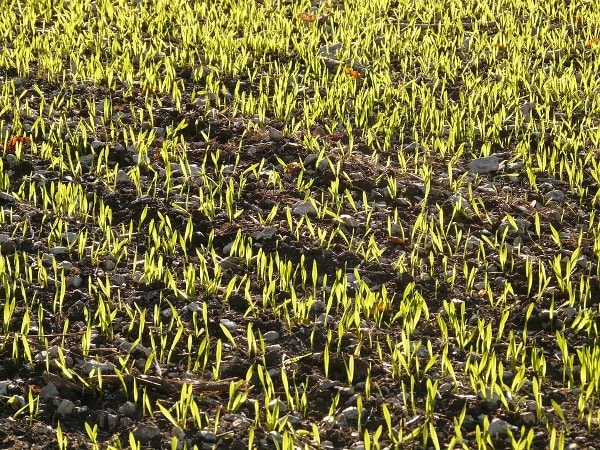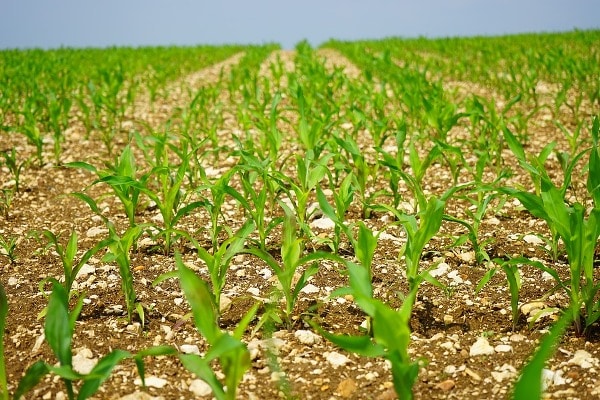Introduction to Seed Sowing Methods:
Today, let us talk about seed sowing methods of crops in agriculture.
What is sowing? Sowing is an art of placing seeds in the soil at particular depth for good germination of the seeds. Sowing plays a major role in Agriculture. Sowing is step followed next to land levelling. Perfect sowing is placing the seed at a specific depth with the correct amount of seed per unit are with good spacing between plant to plant and row to row.

Land preparation or Soil preparation for sowing the seeds:
Soil preparation is the first and foremost step to be followed before sowing seeds. There are various methods of land preparation in crop production. The process of soil preparation includes three important steps. They are
- Ploughing
- Leveling
- Manuring
Ploughing:
This is the first step in soil preparation before sowing. Ploughing is the process of loosening and turning of the soil upside down in order to make sure the availability of nutrients uptake by the plants. Ploughing helps in easy penetration and germination of the seedlings after sowing. It also helps in proper aeration to the plants. Loosening the soil helps in the growth of beneficial microbes and earthworms which are highly beneficial to the crops. In addition, Ploughing helps in weed control by removal of the volunteer hosts or weeds in the crop. Furthermore, ploughing makes the soil nutrient rich. Ploughing is the mandatory agriculture practice followed before sowing almost in all the Agricultural crops. However, the number of ploughings may vary depending on the crop which we select. Ploughing may be done using various agricultural equipment like Plough, hoe, cultivator, etc. Ploghing may also be followed by harrowing in hard soil crops with equipment known as a harrow.
Leveling:
It is step followed next to ploughing. Leveling is nothing but the even spread of the soil after ploughing. Leveling of the land varies with crops. Leveling includes making of ridges, furrows and other designs that suit for a specific crop. Leveling helps in easy distribution of irrigation water in the crops that help in even uptake of water by all the plants in the crop. The equipment used for leveling is known a leveler.
Manuring:
It is practice followed before sowing. It is the addition of organic amendments like cow dung, earthworms, neem extracts, synthetic fertilizers to soil to enrich the nutrient content if the soil. Before manuring the soil, we should compulsorily go for soil testing in order to ensure the availability of nutrients and minerals at appropriate quantity in the soil. Based on the information available in the soil test report we must go for manuring the soil with natural amendments.
After completion of these important steps, we should go for sowing or transplanting of the seeds in Agrifarming.
Seed sowing methods:
There are various methods of sowing that depends on the crop which we select and available land and other natural resources for crop production.
Various seed sowing methods:
- Broadcasting
- Dibbling
- Drilling
- Seed dropping behind the plough
- Transplanting of seedlings
- Hill placement
- Check row planting.
A broadcasting method of seed sowing:
It is an easy method of seed sowing. In this method, the seeds are randomly thrown on the prepared land or seedbed with hand physically. However, it can also be done mechanically. Even though, manual broadcasting is beneficial for some crops which are also economical too. While broadcasting the farmer must ensure that the person should be enough skilled to broadcast the seeds. When we go for manual broadcasting, it consumes a high quantity of seed or the seed rate is high in the broadcasting method of seed sowing. However, the machinery used in broadcasting is good and efficient as it scatters the seeds at controlled rates on the field.
Read: How To Treat Seeds For Sowing.
Dibbling method of sowing seeds:
It involves the placing of the seeds in the holes manually or with specific instruments known as dibblers. Those dibblers can be operated manually by skilled labor or skilled farmers. The dibbler is the conical instrument in order to make proper holes while sowing of the seeds in the field. There are also small hand dibblers which several conical projects that are suitable for small size seeds. Dibbling method of sowing is time-consuming sowing method. This method of sowing is mostly used for sowing of the Vegetable Crops.
Drilling method of seed sowing:
The continuous flow of dropping the seeds in-furrow lines made by the seed drilling machine and covering them with soil is the drilling method of sowing the seeds. The equipment used for drilling is known as a driller. The driller may be either operated manually, mechanically or automated. The setting of seed metering is done before sowing for proper placement of the seeds in the furrow. We can use the driller for placing the seeds in two to three rows at once. There also exists a conventional method where one person make furrows and drops the seed using driller and the other person covers the furrow with the soil either manually or mechanically.
Read: How To Grow Chia Seeds.
Dropping off the seed behind the plough:
It is a very common and conventional method of sowing the seeds. The method is mostly used for sowing of the seeds like maize, gram, wheat, barley, etc. A man drops the seed behind the plough in this method. Plough consists of a bamboo tube made with funnel-shaped mouth to drops the seeds. The disadvantage of this method is it is time-consuming as well as the laborious method of sowing the seeds.
Hill dropping of seeds:
The seeds are dropped in fixed furrows which are dug with fixed spacing. In this method, the space between row to row and plant to plant is constant. The seed is sown in a continuous stream of the spacing row to row and plant to plant.
Transplanting:
In this method, the seeds are first sown on the seedbed and later after some days, the young seedlings are further transplanted on to the main field at the particular plant to plant and row to row spacing. The equipment used for transplanting is known as Transplanted. However, we can also transplant the seeds manually.
Check-row planting:
In this method of sowing, we maintain uniform spacing between plant to plant and row to row. The seeds are transplanted in the furrows in a parallel manner. The direction of two rows will be always perpendicular in the check row planting method of sowing. The equipment or machine used for this method of sowing is known as Checkrow planter.
Tips for sowing in different crops:

As sowing plays a major role in Agriculture farming, knowing the various tips of sowing in various crops is profitable.
Sowing methods in Sugarcane:
In sugarcane farming, we will go for the sowing of sets on the seedbed first and later we can go for transplanting of those sets on to the main field. There is special equipment to make sugarcane sets. The sets of sugarcane are made in such a way that one set contains at least one node. The new plant arises from those set in the nursery and further transplanted on to the main field after some days of sowing those sets.
Sowing methods in Paddy:
In Paddy cultivation, the seeds are first sown on the nursery seedbeds and later transplanted on to the main field after 30 to 40 days known as transplanting. This step is commonly followed in Irrigated paddy cultivation. Whereas in dryland paddy cultivation, the paddy seeds are sown directly in the main field with a certain specific row to row and plant to plant spacing.
Sowing methods in Pulses:
Pulse crops are majorly Green gram, Bengal gram, red gram, Peas. In almost all the pulse crops, we may go for drilling or dibbling method of sowing method. The seeds are sown at a depth of 5 to 7 cm below the soil.

The plant spacing in Cereals:
Cereal crops mostly grown are Wheat, Paddy, Oats, Sorghum, Bajra, Foxtail millets, etc.
Cereal Plant – Plant X Row – Row spacing
Paddy (Kharif) 15 X 15 to 15 X 20 cm
Paddy (Rabi) 15 X 10 cm
Sorghum 45 X 15 to 20 cm
Wheat 15 X 15 to 15 X 20 cm
Maize 30 X 15 cm
Bajra 30 X 15 cm
Bajra (Fodder) 50 X 50 cm.
The plant spacing in Pulse crops:
Pulses Plant – Plant X Row – Row spacing
Black gram 30 X 10 cm (Dibbling method)
Greengram 30 X 10 cm (Dibbling method)
Bengal gram (Desi type) 30 X 10cm
Bengal gram (Kabuli type) 45 X 10cm
Red gram 30-45cm X 8-10cm.
Read: How To Grow Black Gram In India.
Small paddy harvester. I want a harvester for five to six acres of land, the harvester should cut, collect, and pack rice.
Hello Sir,
I am planning to do vertical farming of Turmeric on a 1-acre land.
Could you suggest any consultants for turmeric vertical farming?
Thanks in advance,